How to Analyze In-App Events in the User Acquisition Report
You can now build custom event funnel analytics by selecting In-App Metrics (like custom events) from the Edit Metrics panel and adding them to your overview dashboard.
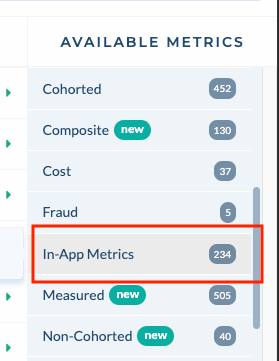
Here’s an example of how the funnel might appear in your User Acquisition Overview dashboard
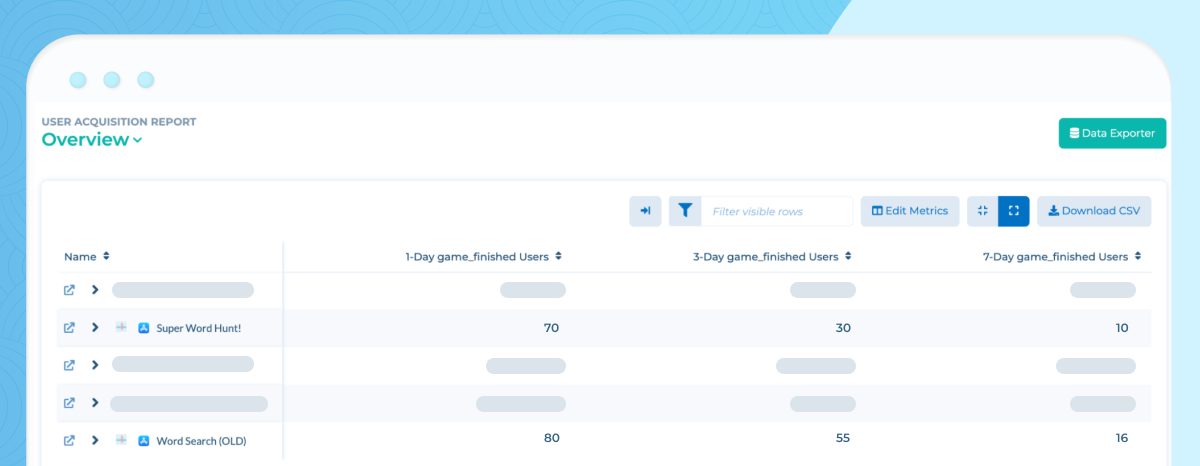
Tenjin allows marketers to analyze any type of custom (post-install) events. Please make sure these events are sent to Tenjin through the SDK. Integration instructions are under "Custom Events" section. For iOS here, Android here, and Unity plugin here
-
Go to ANALYZE -> User Acquisition tab, and choose In-App Events from the dropdown menu.
-
You can see a list of in-app events that have been integrated in the drop down.
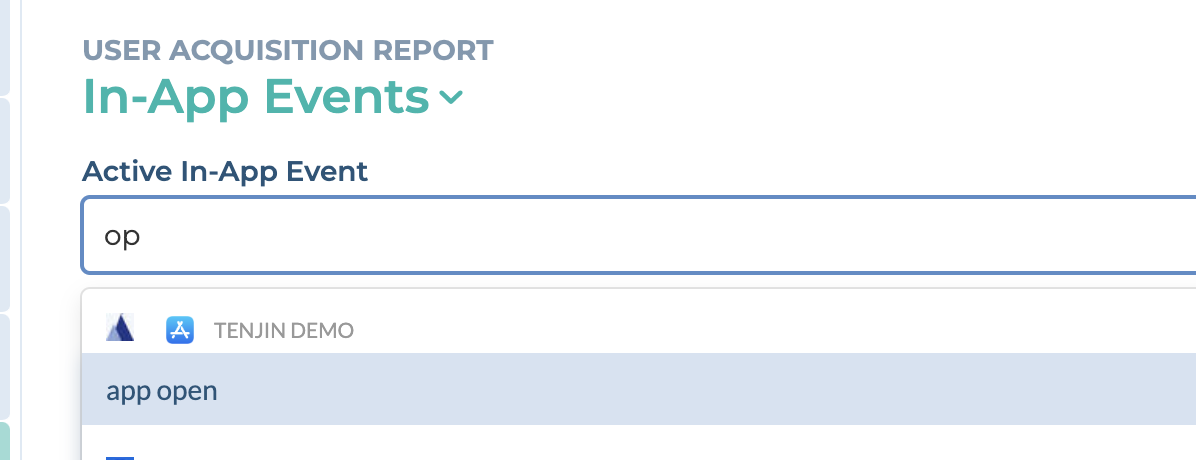
- Choose an event from the list. Based on your selection, you can see different metrics for the in-app event.
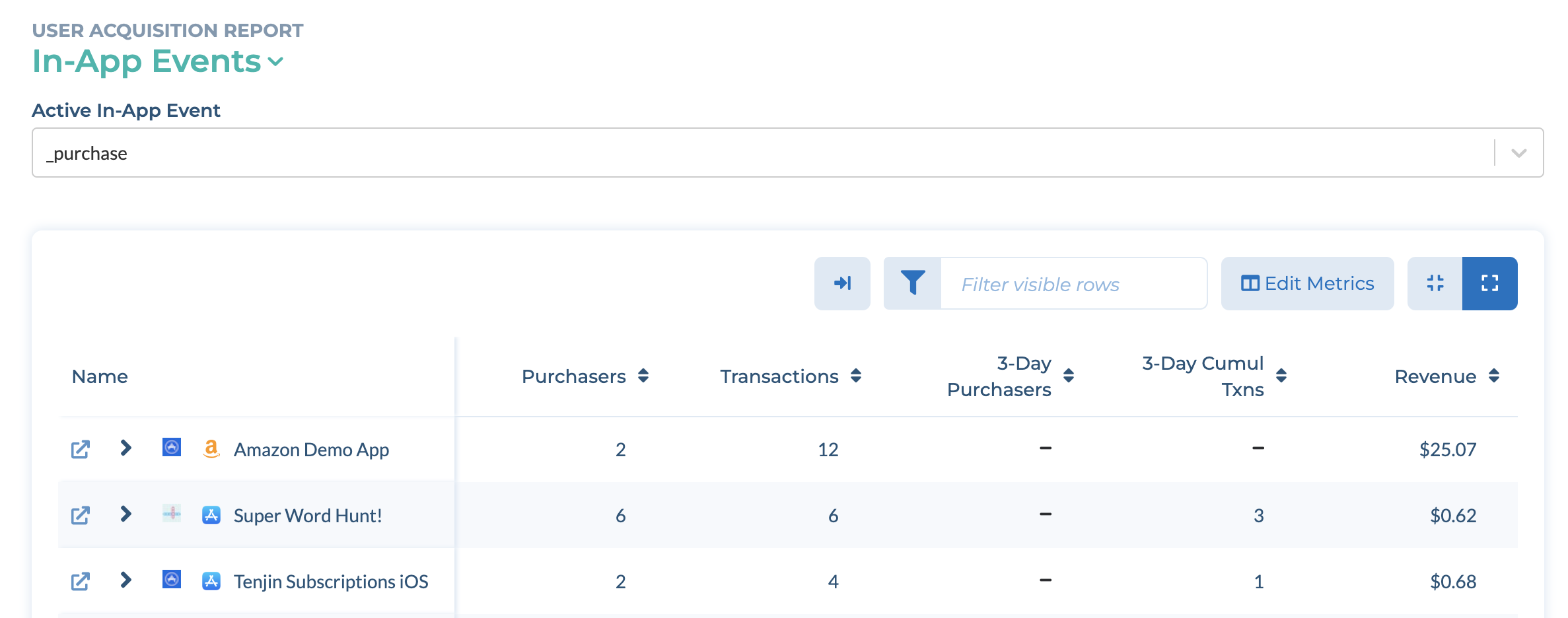
- Metrics by Date of Occurrence
- Users - count of distinct users who performed the event
- Counts - how many events occurred
- Sum - the sum of all values associated with the event
- Average - the average of values associated with the event
- Metrics by Date after Acquisition
- Users - count of distinct users who performed the event
- Cumulative count - cumulative count of events over the lifetime of the cohort
- Cumulative sum - cumulative sum of event values over the lifetime of the cohort
- Cumulative count per user - On average, how many events did each user in the cohort generate. If this event is expected to occur at most once for each user, you can use this as a measure of what fraction of users generated that event.
- Cumulative sum per user - On average, what is the total value per user in the cohort.
- Participation rate - On each day after acquisition, what percentage of the cohort generated the event. This number may increase or decrease over time because it reflects how many participants were seen each day.
- Cost per participant - On each day after acquisition, how much did you spend to get users on that day. This number may increase or decrease over time because it depends on how many participants were seen each day; more participants means lower cost.
- Cost per event - On each day after acquisition, how much did you spend to obtain all occurrences of that event. This number only decreases, since it depends on the cumulative count of events.
How should I interpret these metrics?
First, filter by the app you’re interested in on the left. Next, you can select which event you’re interested in, e.g. “use_hint”.
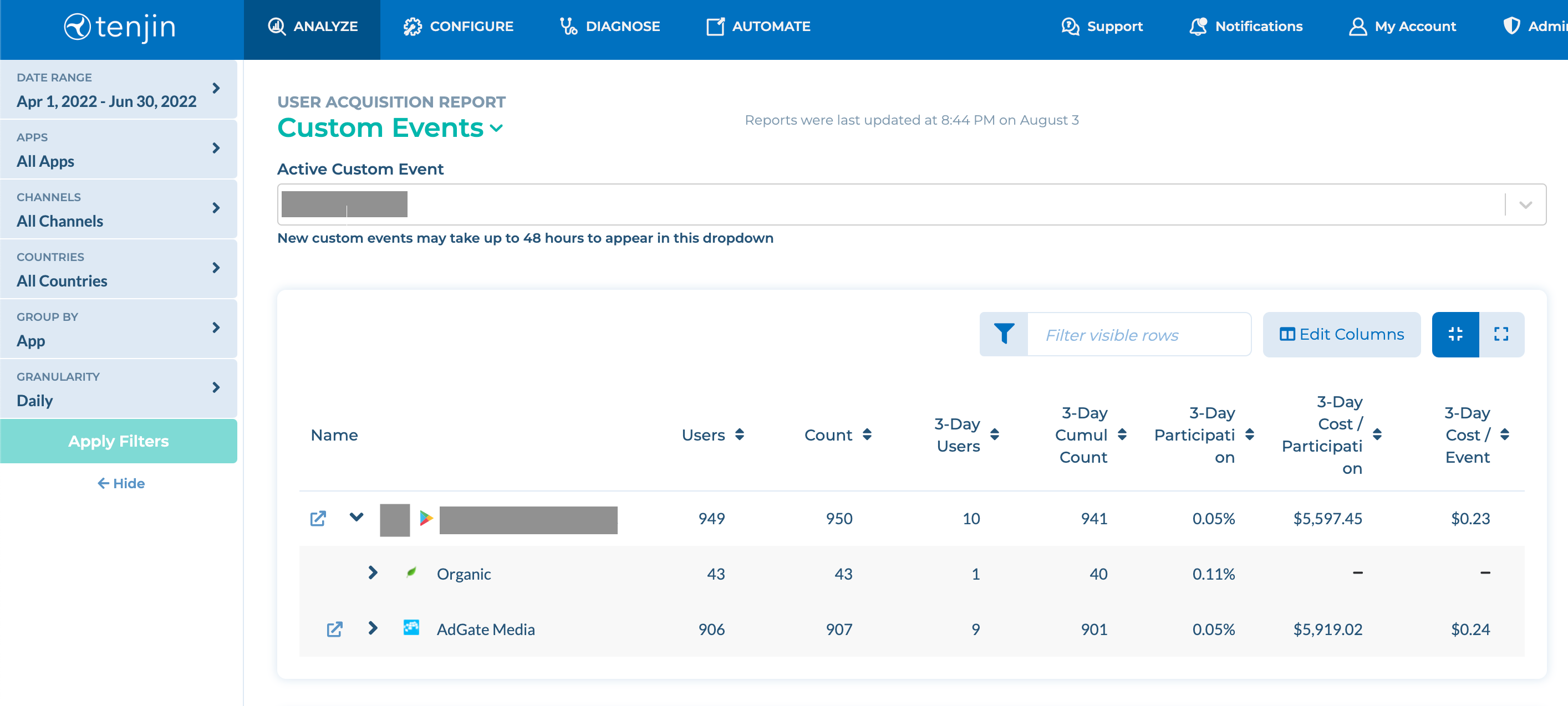
In the date range Apr 1 to Jun 30, you got 949 users who did the “use_hint” event. We received the “use_hint” event 950 times. On day 3 of life, 10 users performed “use_hint”. In the first 3 days of life, your new users (people who installed in the date range) made a total of 941 “use_hint” actions. On day 3 of life, 0.05% of new users performed “use_hint”. Click the row to expand it. The child rows show the breakdown by channel.
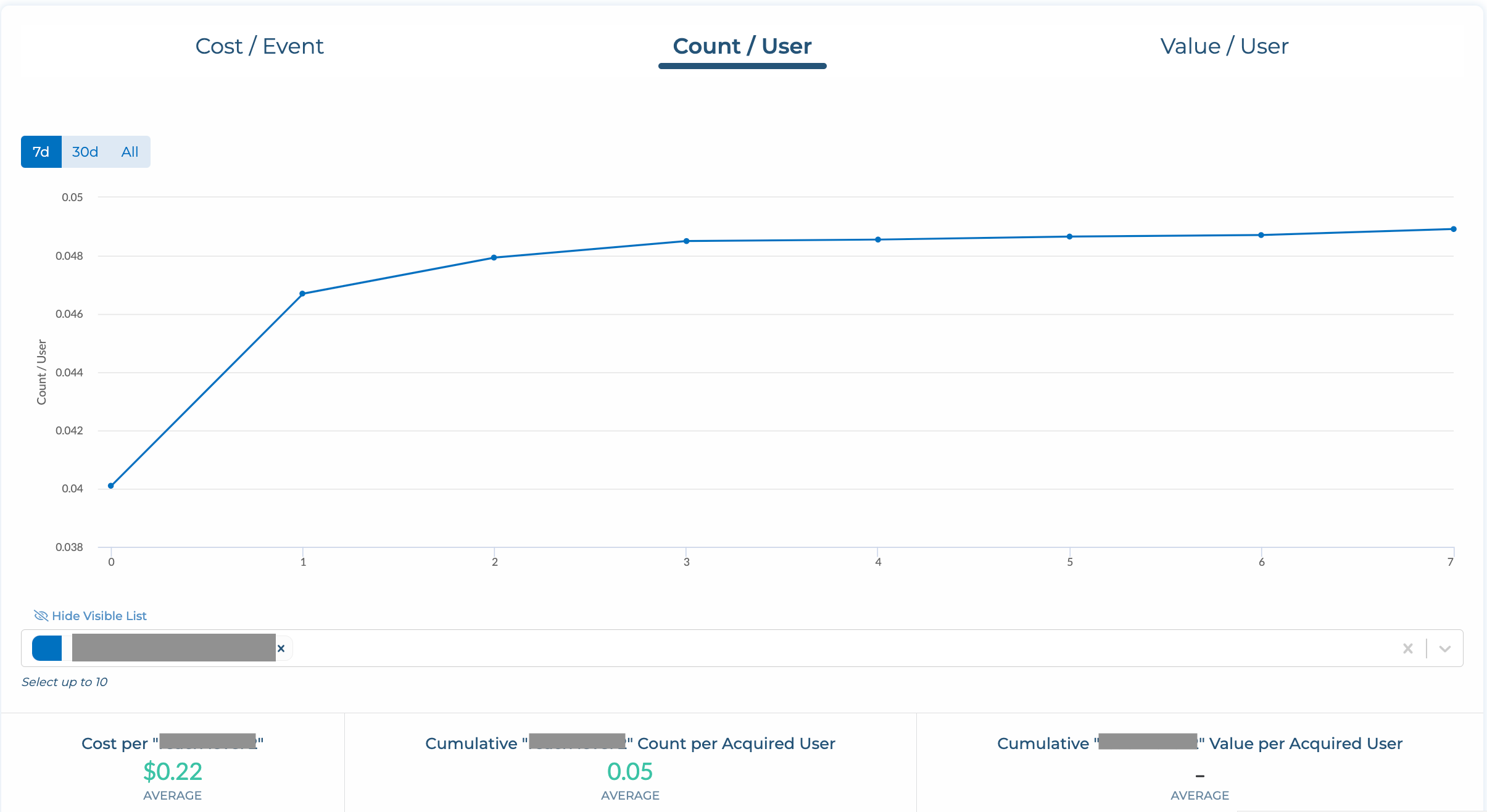
The “use_hint” chart shows how many “use_hint” events were performed on average for each user on each day of their app lifetime. You can see that by day 2, each user performed 0.048 “use_hint” events on average.
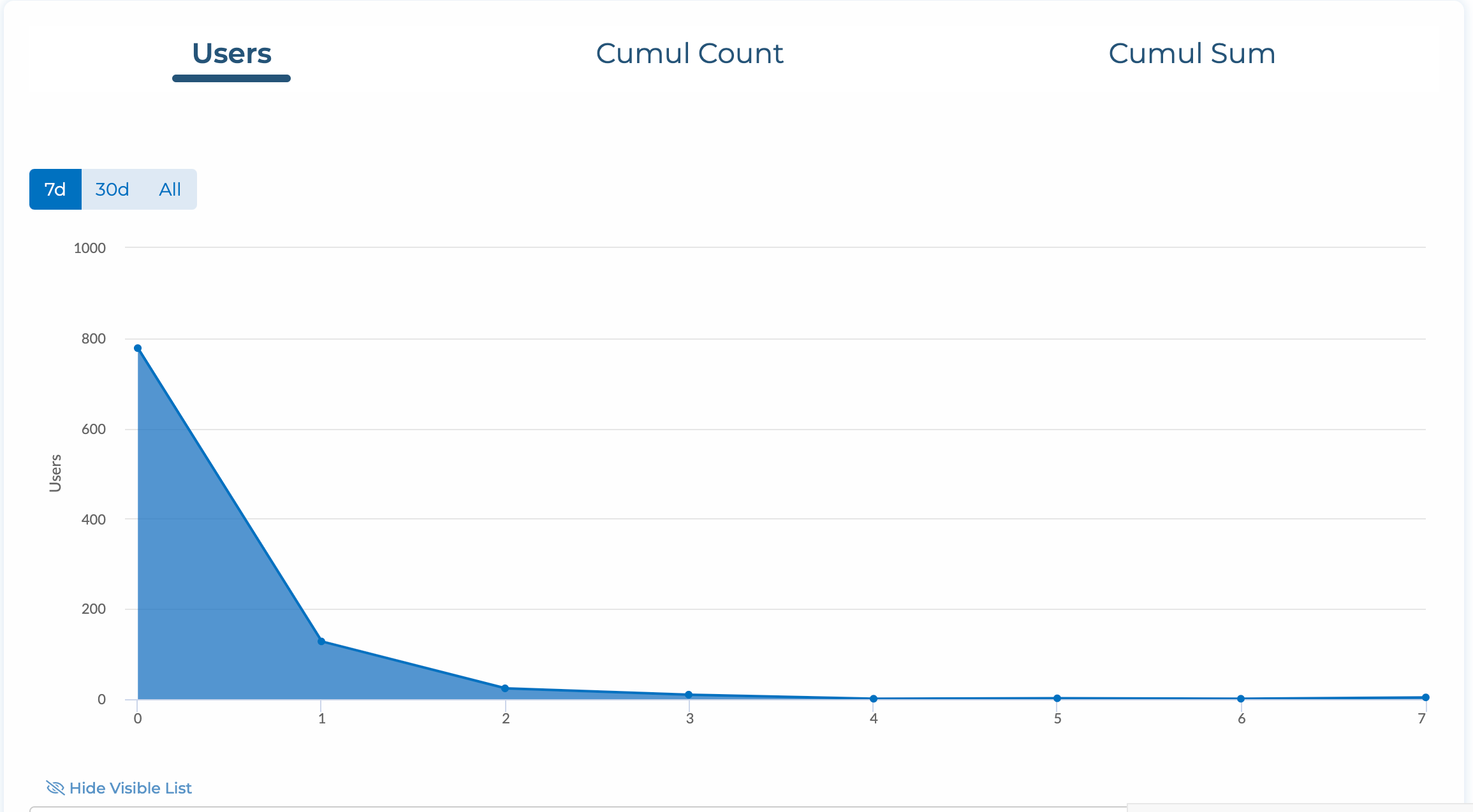
Similarly, 778 users did “use_hint” on day 0.
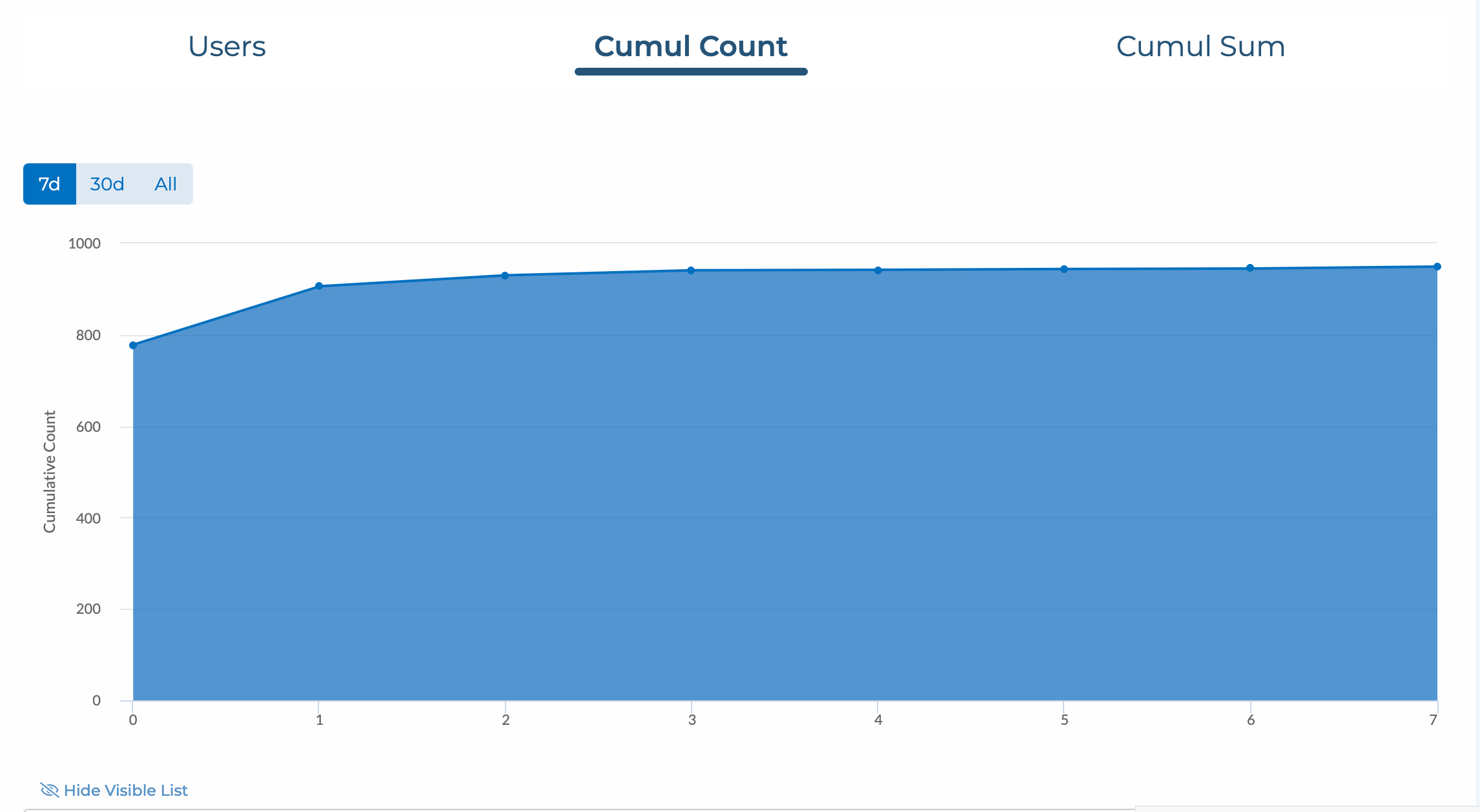
You can also change the “Group By” on the left to “channels” or “campaigns” to see the breakdown and decide which campaign drove the most “use_hint” events.
What are some examples of in-app events that I should track with the Tenjin SDK?
With the Tenjin SDK, you can gain insight into user behavior by sending in-app events. At a high level, you should instrument a in-app event anywhere user value might be associated within your app. Each event may have an optional numeric value associated with it. You can see how often these events occur, what source they came from, how much they cost, and how much value they generated.
Some useful examples for our customers include:
- tutorial complete
- facebook connect
- level complete
- invites sent (potentially with specific events for Facebook/Twitter/SMS/etc)
- virtual currency purchases (you can pass in the amount of currency spent as the event value)
Funnels
You may want to track some kind of “funnel” or “sequential” activity, for example: complete registration -> complete tutorial -> complete level 1. You will have to track your user’s stage in the funnel (Tenjin SDK will not do this for you), then emit a custom event for each stage. In this example, the stages would be stage-1-registration-complete, stage-2-reg-and-tutorial-complete, and stage-3-reg-tut-level1-complete
Bad Examples
You should NOT send user attributes using in-app events. DO NOT send events like:
- user’s IP address
- user’s Facebook id
- user’s demographic info
- device info
When deciding on the value of a in-app event, you should be able to answer “yes” to most of these questions:
- is this an ACTION performed by the user?
- is the TIME performed relevant?
- is the number of OCCURRENCES important to me?
- is the AVERAGE or SUM of the values important to me?
Contact support@tenjin.com if you have any questions.